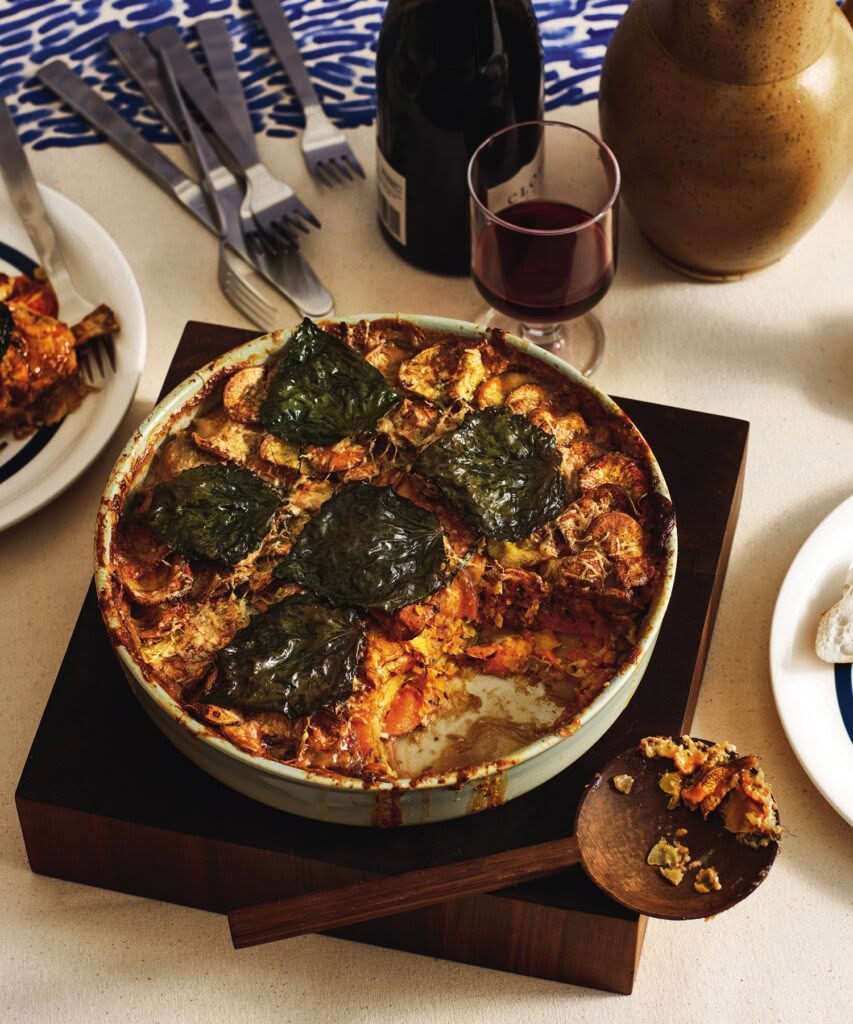Kūmara Gratin with Kawakawa
Ginny Grant

Serves
4 - 6 as a side dishPreparation
20 minsCook
2 hrsIngredients
| 1 good knob of butter | |
| 1.5 kg kūmara, scrubbed | |
| 300ml whole milk | |
| 300ml cream | |
| 4 cloves garlic, thinly sliced | |
| 4 leaves kawakawa, finely shredded, plus extra for serving (optional) | |
| 25g Mahoe Very Old Edam, finely grated |
VEGAN
I can’t think of a dish that is more loved than a gratin or one that is more closely associated with France. Gratin Dauphinoise at its most basic is thinly sliced potatoes, baked with garlic and milk and its written history dates to 1788, although it is likely that variations existed before then.
Kūmara makes for an excellent variation here and this is one that, for me at least, will more than likely feature at Matariki celebrations.
I don’t usually bother peeling the kūmara, but feel free to do so. You can use any colour here although I often try to use a mix of colours. If you can’t find fresh kawakawa, try using the picked leaves of a few sprigs of thyme in its place. I find most vegetarian parmesan lacking in flavour and with two vegetarians in the household I tend to use the award-winning and exceptional Mahoe Very Old Edam as my preferred alternative.
View the recipe collection here
Instructions
| 1. | Heat the oven to 180°C. |
| 2. | Grease the inside of a 2.5-litre capacity baking dish with the butter. |
| 3. | Use a mandolin to thinly slice the kūmara. |
| 4. | Combine the milk and cream. |
| 5. | Layer kūmara slices in the baking dish, seasoning each layer with salt and pepper, a little garlic and shredded kawakawa and a good splash of the liquids. |
| 6. | Cover with baking paper and then tightly cover with foil and put into the oven. |
| 7. | Bake for 1½ hours. Remove the foil and baking paper, add the grated cheese and bake for 30 minutes or until bubbling and golden. |
| 8. | If you wish, 15 minutes before the end of cooking toss the remaining kawakawa leaves with a little olive oil and scatter over the top; they will crisp up beautifully on top of the gratin. |
| 9. | Delicious served with a green salad. |
Recipes & food styling Ginny Grant / Photography Aaron McLean / Styling Jessica Crowe
